Nature’s Changing Canvas
Every year, across different corners of the world, a spectacular natural phenomenon unfolds — beaches that suddenly turn black. Known among locals and geologists as “Seasonal Black Sandfalls,” these are not permanent volcanic beaches like those of Iceland or Hawaii. Instead, they are seasonal black sand beaches, transforming only for a few weeks during the monsoon season or after heavy river runoff.
The transformation feels almost magical: golden or white sands take on a dark, shimmering hue as fine volcanic minerals, basaltic sediments, and mountain silt wash downstream into coastal waters. These fleeting changes tell powerful stories about erosion, ecology, and the living connection between land and sea.
This article takes you on a journey through some of the world’s most striking seasonal black sand beaches, exploring how they form, where to find them, and why they matter — both scientifically and spiritually.
🌊 What Is a Seasonal Black Sand Beach?
A seasonal black sand beach is a shoreline that changes color temporarily — usually during heavy rainfall or monsoon seasons — when rivers or nearby cliffs deposit dark sediments onto the coast. Unlike permanent black sand beaches (formed by continuous volcanic activity), these color shifts are ephemeral, lasting from a few days to several weeks.
The Science Behind the Color Shift
The dark tones come from iron-rich minerals, basalt, and magnetite — materials weathered from volcanic rock or mountain soil. When carried by rivers or storm runoff, they settle over lighter sands, creating a black, velvety sheen that slowly fades as tides and winds redistribute the grains.
Natural “Sandfalls” — A Spectacle of Movement
During the runoff season, streams act like natural conveyors, pouring black sediments into the sea — forming what locals poetically call “sandfalls.” Under sunlight, these sands sparkle silver and grey, producing mesmerizing contrasts with turquoise waves.
🌏 Top Locations with Seasonal Black Sand Beaches
Below are some of the most beautiful and mysterious seasonal black sand beaches around the world — each with its own story.
1. Kerala, India – The Monsoon’s Dark Gift
During India’s southwest monsoon (June–September), Kerala’s coastline, especially near Varkala and Kovalam, transforms dramatically. Torrential rains wash down dark lateritic and basaltic soils from the Western Ghats. The result? A temporary seasonal black sand beach that glistens under gray skies.
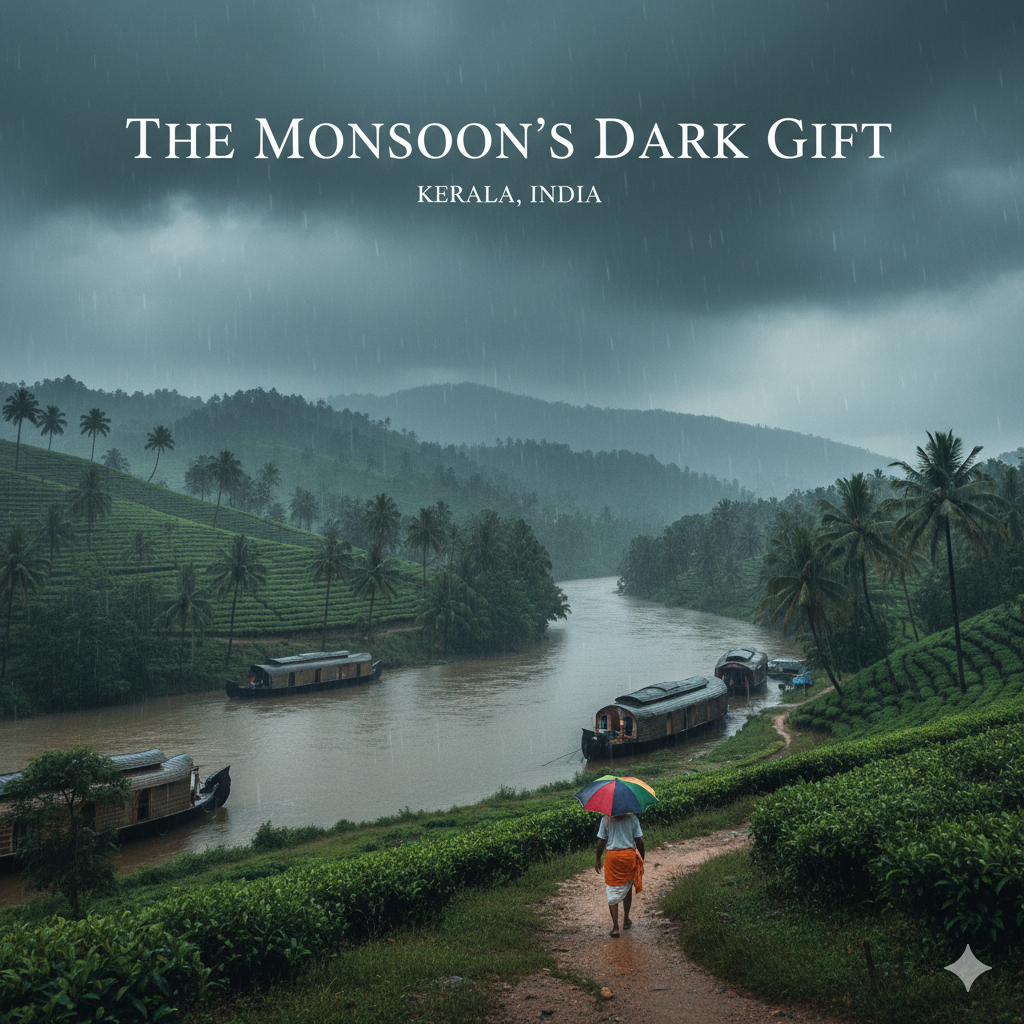
2. Waipio Valley, Hawaii – River Meets Ocean
Even Hawaii, famous for its permanent volcanic sands, experiences temporary darkening during periods of high rainfall. When the Waipio River floods, basalt-rich silt mixes with the beach sands, creating a deeper, more dramatic tone — a rare sight even for locals.
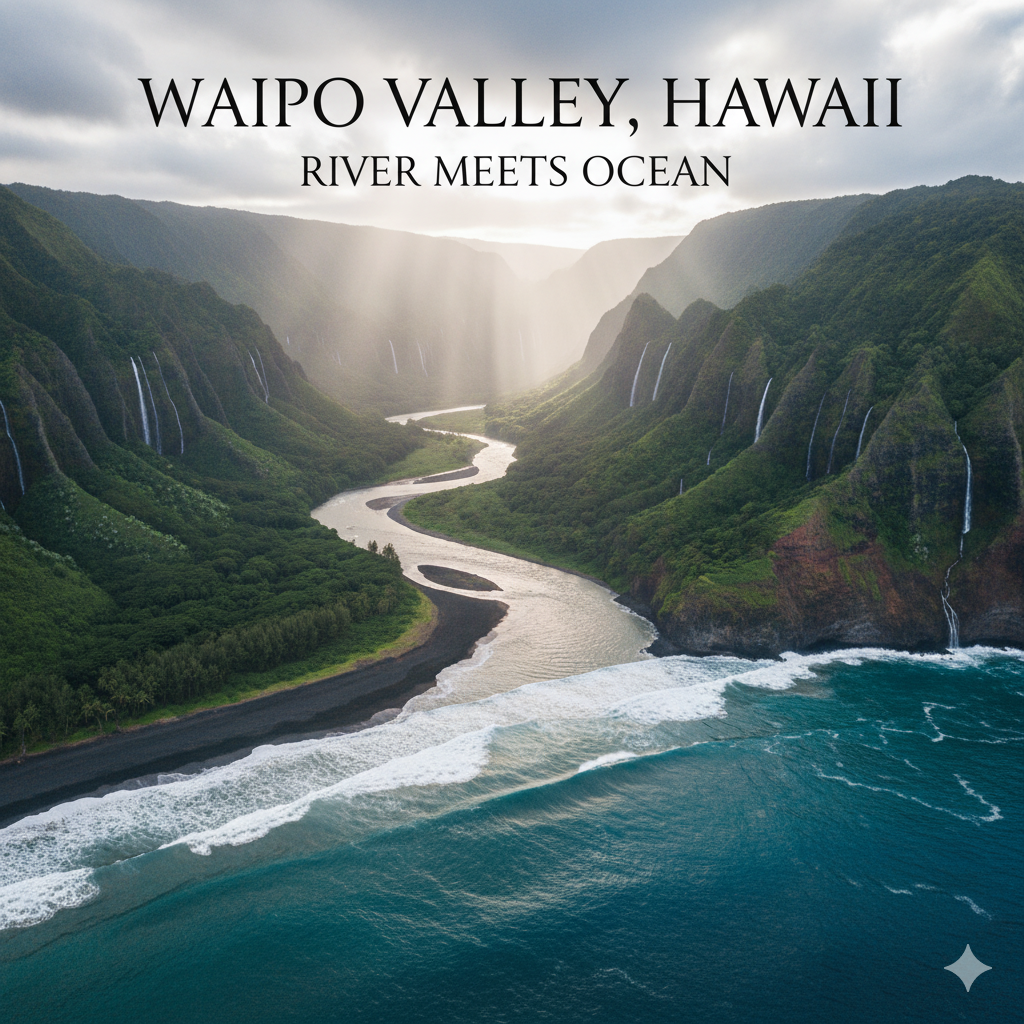
3. Camiguin, Philippines – The Island Born of Fire
Nicknamed the Island Born of Fire, Camiguin is surrounded by volcanoes and rich mineral soil. During heavy tropical rains, Mantigue and Catarman beaches develop temporary black layers as river sediments spill into the sea. These events highlight Camiguin’s living volcanic nature.
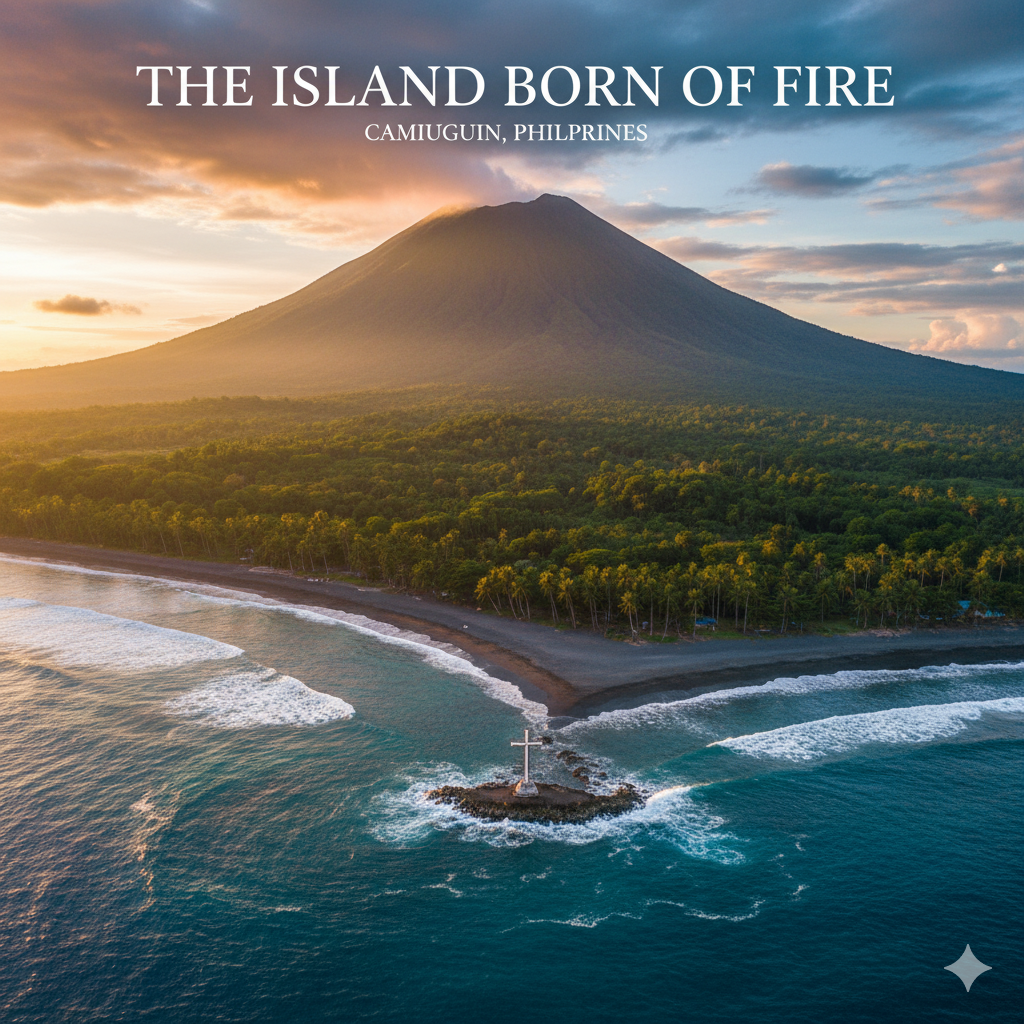
4. Costa Rica’s Osa Peninsula – Tropical Sand Shifts
During heavy Pacific downpours, the Osa Peninsula’s remote beaches—particularly near Corcovado National Park—turn darker. The runoff from rainforest cliffs deposits fine magnetite and volcanic soil into the ocean, giving rise to short-lived seasonal black sand beaches that contrast beautifully with lush greenery.
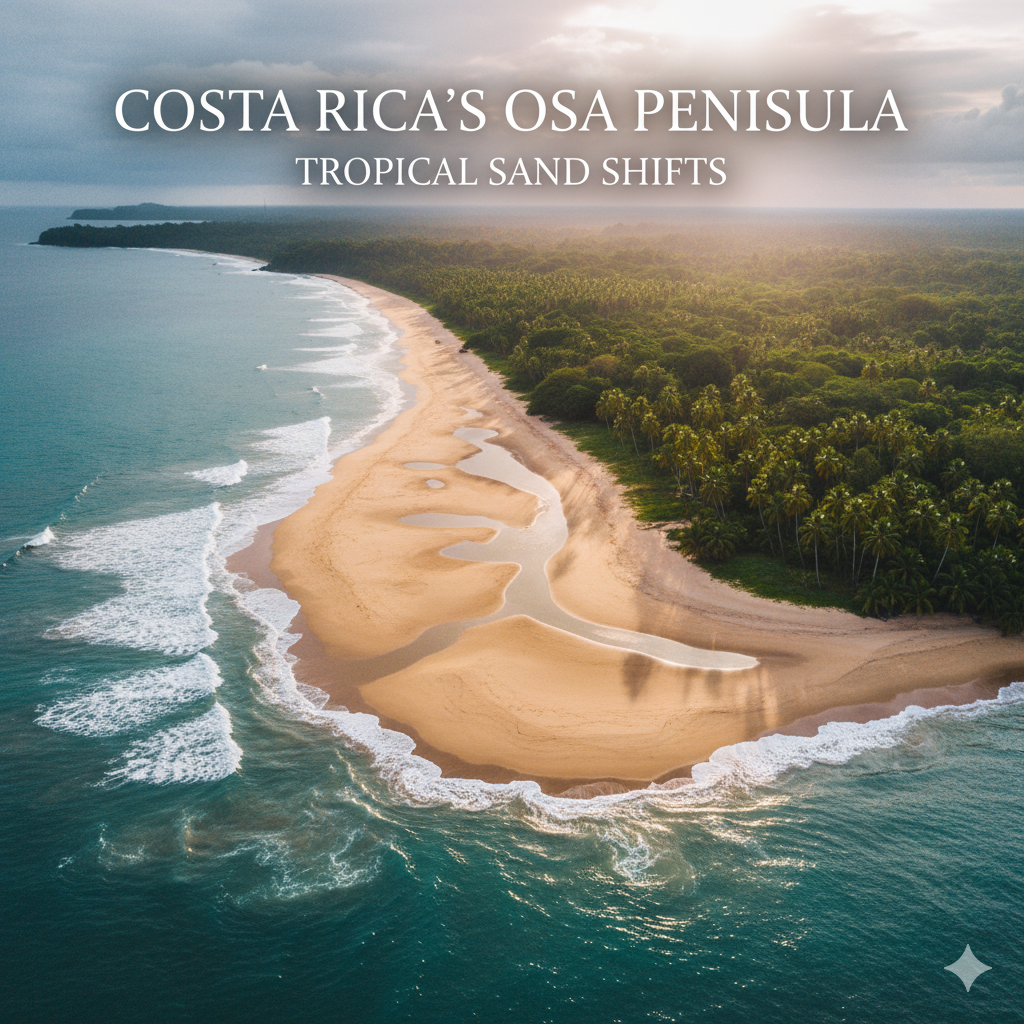
5. New Zealand’s Piha Beach – Temporary Darkness from the Hills
Piha is known for its permanent iron-sand coast, but after heavy storms, nearby Tasman cliffs send darker mineral deposits down to sea level, further intensifying the black sheen. The visual transformation during wet months makes Piha’s already striking beach even more surreal.
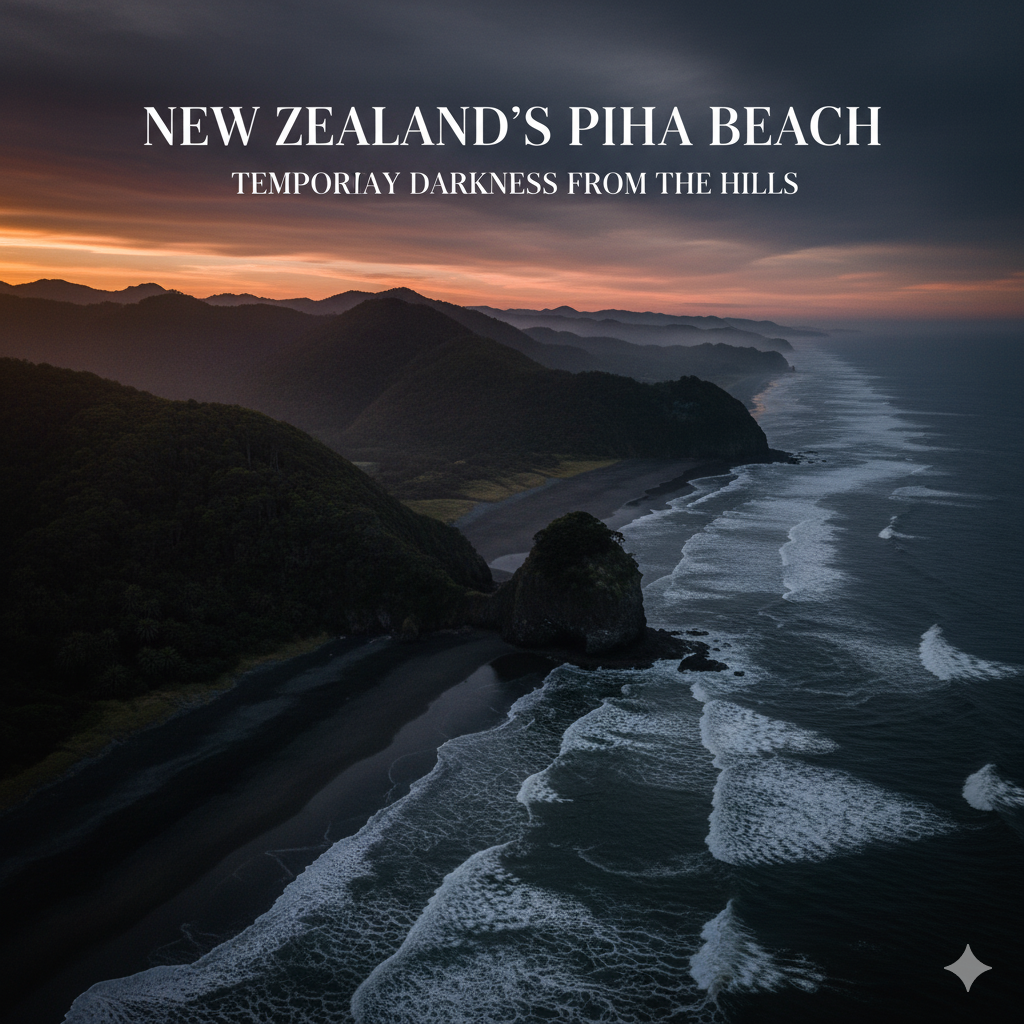
Geological and Ecological Importance
Indicator of Sediment Transport
The appearance of a seasonal black sand beach indicates active sediment movement and erosion — vital clues for coastal geologists studying landform dynamics.
Temporary Habitat for Marine Life
These seasonal sands influence shoreline temperatures and reflectivity, impacting micro-ecosystems such as crabs, algae, and nesting birds.
Natural Filtration
Black sands, being denser and magnetite-rich, help filter organic matter, improving water clarity during runoff seasons.
Best Time to Visit Seasonal Black Sand Beaches
| Region | Best Months | Event |
|---|---|---|
| Kerala, India | June – September | Southwest Monsoon |
| Camiguin, Philippines | July – October | Typhoon / Rainy Season |
| Osa Peninsula, Costa Rica | May – November | Tropical Rain Season |
| Hawaii | November – March | Heavy River Runoff |
| New Zealand | May – August | Winter Storms |
Always check local weather forecasts before traveling. Some of these areas experience rough seas and limited access during storm seasons.
Exploring the World’s Color-Changing Beaches
US Geological Survey: Coastal Sediment Data
Sustainability and Visitor Responsibility
Seasonal black sand beaches are fragile ecosystems. Travelers can help preserve them by:
- Avoiding vehicle access or trampling dunes.
- Using reef-safe sunscreen to protect nearshore ecosystems.
- Supporting local eco-guides instead of commercial tours.
- Never collecting sand or rocks (illegal in most regions).
Frequently Asked Questions (FAQs)
Q1: What causes a beach to turn black seasonally?
Heavy rain or monsoon runoff carries dark minerals from inland volcanoes or mountain soil, temporarily layering them over lighter sands.
Q2: Are seasonal black sand beaches safe to visit?
Yes, though some may experience strong tides or runoff currents during storm seasons. Always check local advisories.
Q3: How long do these black sands last?
Typically 1–4 weeks, depending on tide strength and sediment volume.
Q4: Can these beaches be found outside volcanic regions?
Occasionally, yes — if nearby rivers transport dark minerals from non-volcanic rock rich in iron or manganese.
Q5: Are seasonal black sand beaches harmful to marine life?
No. In fact, their temporary mineral deposits can create new microhabitats and promote sediment recycling.
Traveler Advise: The Beauty in Change
The seasonal black sand beach is one of nature’s most poetic displays — a vivid reminder that even Earth’s landscapes breathe and change. For a few fleeting weeks, golden shores don a black robe of mystery, reflecting both the power of the monsoon and the resilience of coastal ecosystems.
Visiting these beaches is not just a travel experience — it’s witnessing geology in motion. Each grain of black sand carries a story of ancient volcanoes, distant mountains, and flowing rivers — all converging at the edge of the sea.
So the next time you plan a trip during the rainy season, keep an eye out — you might just find yourself standing on one of the world’s rare seasonal black sand beaches, watching nature paint its masterpiece in shades of midnight.

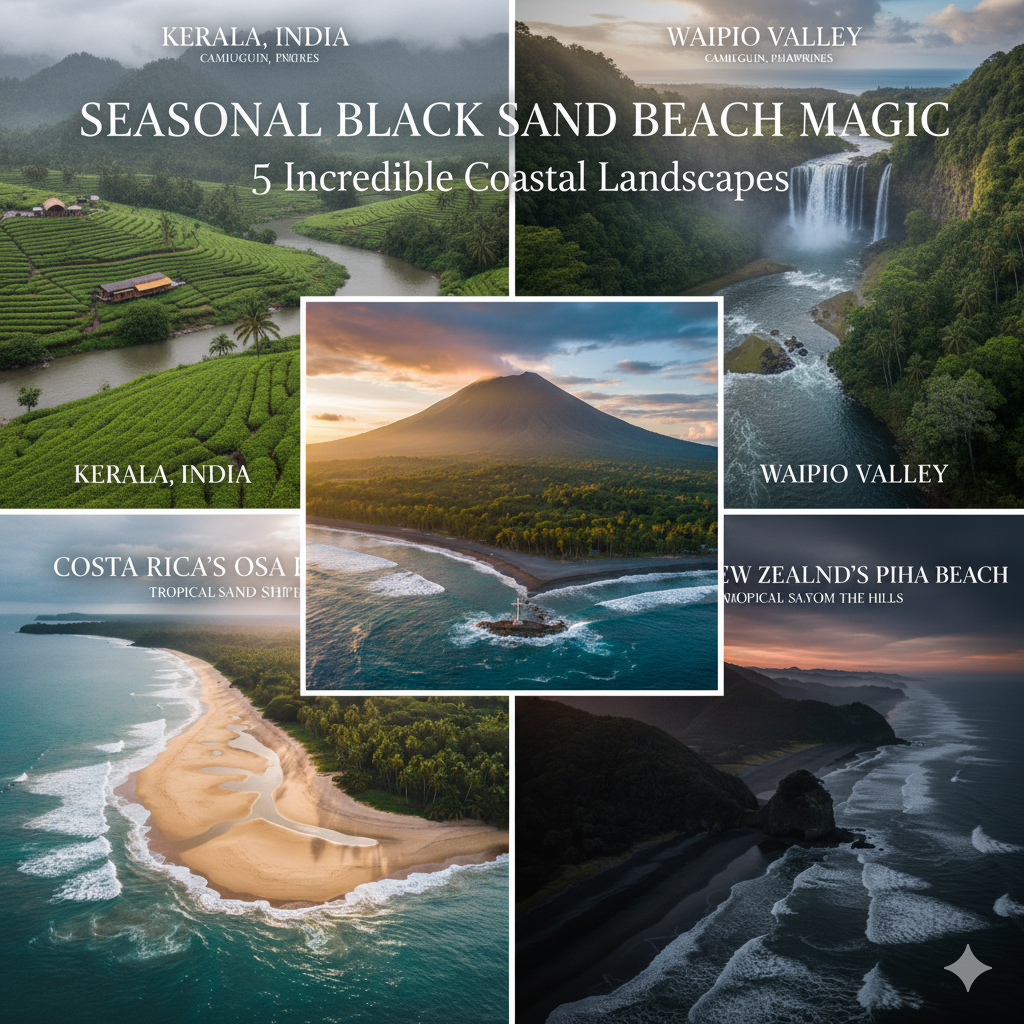

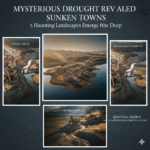
Pingback: 7 Mysterious Drought Revealed Sunken Towns Uncovered
Pingback: 10 Best Things to Do in Camiguin Beyond White Island
Pingback: 7 Stunning Phosphorescent Mineral Beach Spots